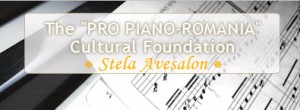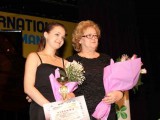Venues:
The first 17 editions of the competition were hosted in prestigious locations, including the “Auditorium” at the National Museum of Art, “ArCuB,” and the Romanian Athenaeum. These events were held annually in June, providing a beautiful and inspiring setting for the performances.
Participation and Reach:
Over its 17 editions, the competition has attracted more than 2,245 participants from 31 countries, showcasing its international appeal. Countries represented include Austria, Azerbaijan, Belarus, Bulgaria, Canada, China, South Korea, Croatia, Estonia, Georgia, Germany, Jordan, Japan, Kazakhstan, Latvia, Lithuania, Macedonia, Moldova, Poland, Russia, Montenegro, Portugal, Slovakia, Slovenia, the USA, Sweden, Turkey, Ukraine, Hungary, Uzbekistan, and Romania.
The second edition was the largest to date, bringing together 190 exceptional competitors, setting a benchmark for future events.
The Jury:
The jury comprises distinguished personalities from Romania and the international musical community. Members include renowned pianists, musicologists, and composers from countries such as Bulgaria, Canada, France, Germany, Greece, Italy, Monaco, Portugal, the USA, and Romania.
Expected Outcomes:
The competition aims to discover unique talents, nurture their artistic growth, and support their national and international careers. Many Grand Prize winners have successfully established themselves in the international music scene. Below are a few notable examples:
- Alexandru Timofeev – Republic of Moldova (1997)
- Anca Lacea – Romania (1998)
- Lucian Velciu – Romania (2001)
- Mariusz Adamczak – Poland (2002)
- Sebastian Shwan – Romania (2003)
- Kana Kashihara – Japan (2008)
- Ekaterina Shishkina – Russia, Moscow (2011)
This legacy highlights the competition’s role as a launchpad for extraordinary talents, enabling them to shine on the world stage.


